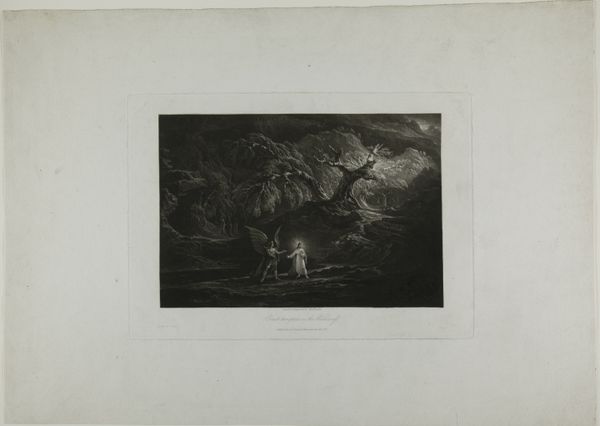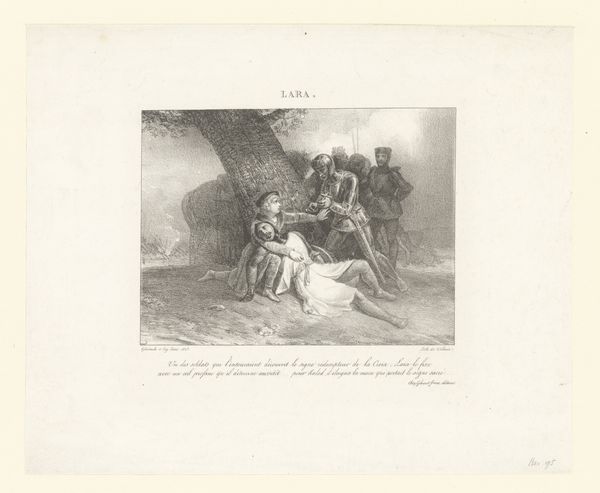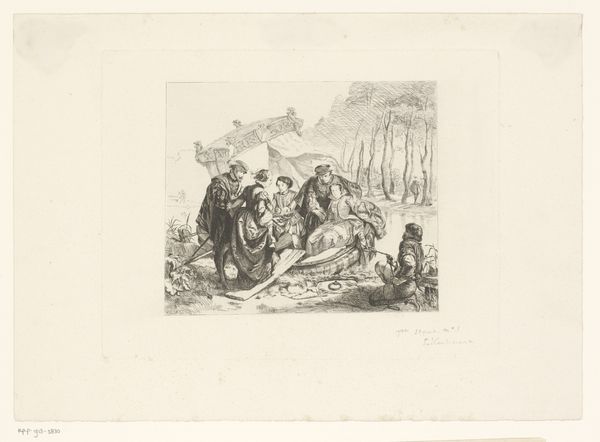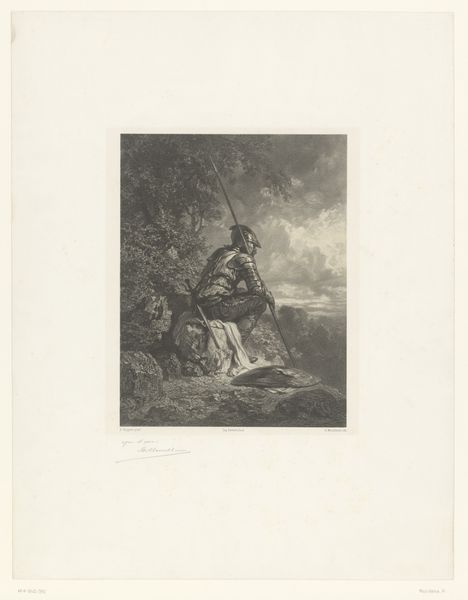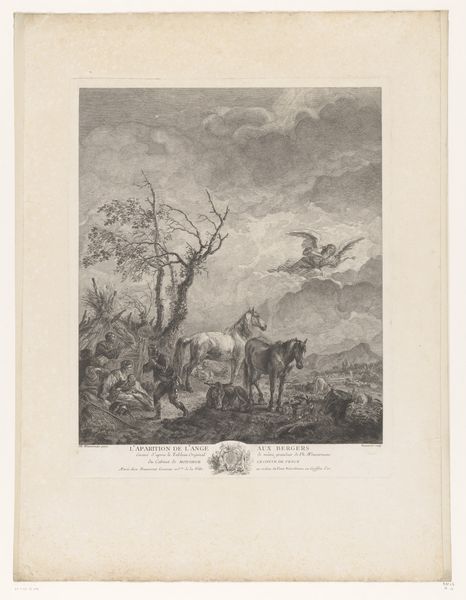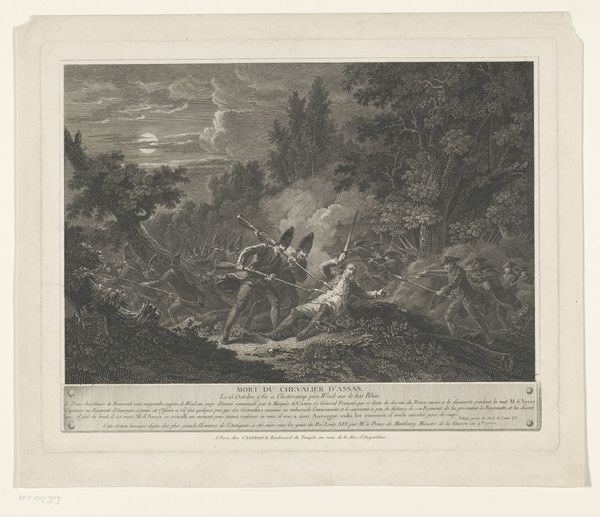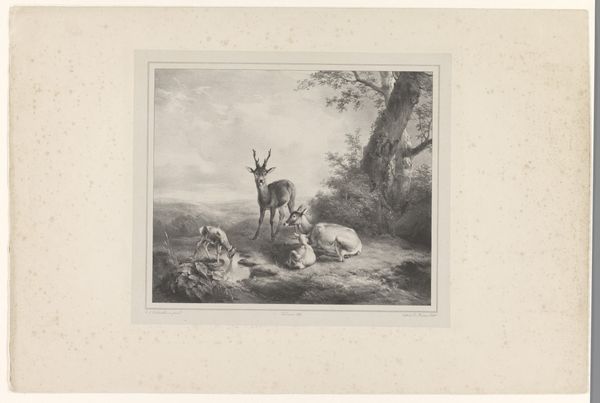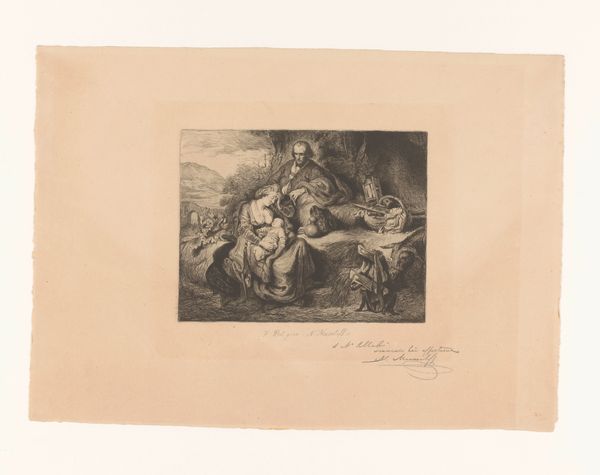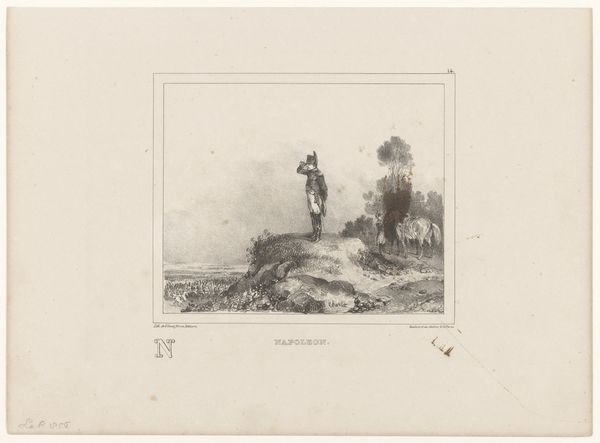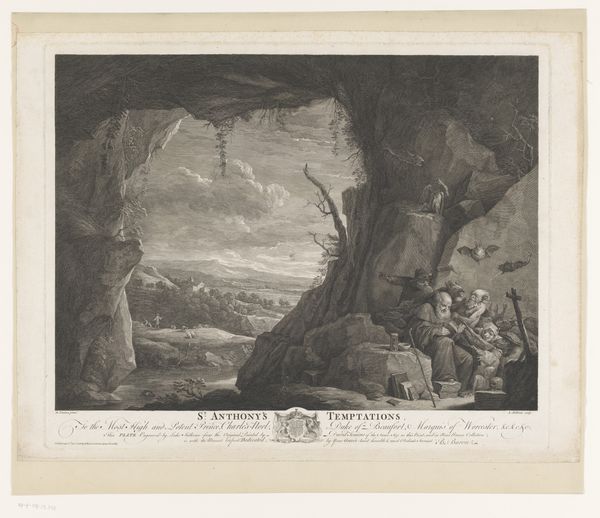
print, engraving
#
narrative-art
# print
#
old engraving style
#
landscape
#
romanticism
#
cityscape
#
history-painting
#
engraving
Dimensions: height 376 mm, width 540 mm
Copyright: Rijks Museum: Open Domain
Curator: This is "Heldendaad van fuselier Clausse," an engraving created around 1831 by Lodewijk Anthony Vintcent, currently residing here at the Rijksmuseum. What strikes you initially? Editor: The bleakness. The grey scale is so heavy; you can almost feel the cold. It evokes the somber, grim realities of warfare and paints Clausse as a man standing up to the odds on a harsh, dark day. Curator: Precisely! The artist utilizes dramatic chiaroscuro, with stark contrasts between light and shadow to create a sense of depth and heighten the emotional impact of the scene. The rigid posture of the fusilier, contrasted against the prone figures of presumably fallen comrades, makes use of the pictorial plane by creating contrasting verticals and horizontals. Editor: I see a loaded political symbolism here as well. The “Heldendaad”, or heroic act, speaks to the loaded context of Dutch nationalism in the 1830s, as the Dutch were working to solidify their identity following French occupation and during the Belgian revolution. This piece certainly depicts sacrifice and militarism as foundational to the imagined Dutch identity, which are themes that are still relevant today. Curator: It’s an excellent point about national identity formation, though I am interested in the purely visual elements at play, specifically the texture rendered by the engraving technique. It creates a striking interplay between the figures and the backdrop, doesn't it? Observe how the buildings fade into the background in relation to Clausse's immediate confrontation. Editor: What I think this composition is implying is the state relying on these citizen-soldiers—on their bodies—to manifest and violently enforce itself in its territory and on its people. A reading of Dutch cultural identity would do well to grapple with these roots in physical violence and state formation in the 19th century, as we're still seeing them expressed today. Curator: I see your point. Through careful composition, Vintcent manages to elicit deep emotional and social meaning, whether intended or not. The technique gives it power. Editor: This piece is far more than meets the eye! I find myself rethinking my initial assumptions regarding warfare and what constitutes "heroism." Curator: As do I, now pondering its interplay of visual elements and historical context. A fitting tribute to art's multifaceted appeal, wouldn’t you agree?
Comments
No comments
Be the first to comment and join the conversation on the ultimate creative platform.
